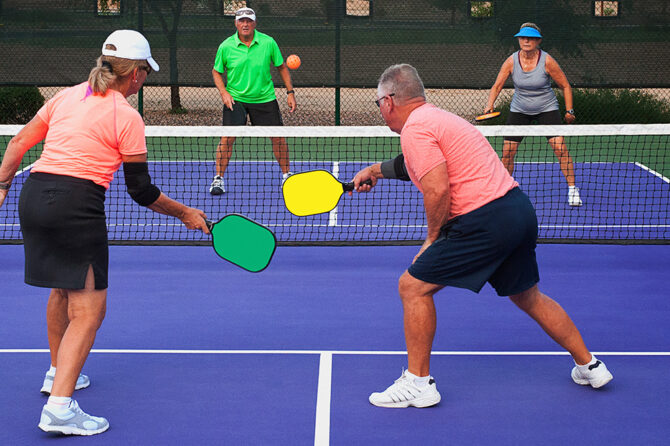
Summer Sports Foot Injuries
Summer is a time of fun and activity. The warm weather and sunshine are inspirational for hitting the court, trails, greens, road, or pool. But along with summer sports come summer sports foot injuries. In Ohio, there are many popular sports and hobbies that can lead to a foot and ankle injury.
Tennis/Pickleball
While tennis and pickleball have some very distinct differences, the way your feet move on the court tends to be the same. Tennis and pickleball require many lateral (side-to-side) movements along with quick stops and changes in direction. These motions can lead to some very unpleasant foot and ankle injuries.
Some of the most common injuries seen in tennis and pickleball are:
- Ankle Sprains — When the ligaments of your ankle are stretched due to an unnatural movement, you will experience an ankle sprain.
- Subungual Hematoma — If your feet slide around in your shoes, you may find blood pooling under your big toe toenail that causes pressure and pain.
- Plantar Fasciitis — Strain and inflammation of the plantar fascia band (which supports the arch) can lead to the pain of plantar fasciitis.
- Achilles Tendonitis — A tight Achilles tendon from a sudden increase in exercise can lead to heel and calf pain.
These are just some of the most common tennis and pickleball foot and ankle injuries. The good news is that many of these injuries can be avoided with proper shoes, stretching, and general caution when running and jumping.
Golf
Golf is a wonderful sport enjoyed by 24.3 million Americans every summer. Despite its low-impact nature, golfers are still prone to many summer sports foot injuries. This can be due to poor shoe choices, long walks, and the twisting of the feet and ankles during a golf swing.
Some of the most common injuries seen in golf are:
- Shin Splints — With excessive exercise and poor shoes your muscle slowly pulls away from the bone and causes painful shin splints.
- Plantar Fasciitis — The long walks carrying heavy bags and the twisting of the back foot during a swing all put pressure on the plantar fascia band which causes pain when inflamed.
- Neuromas — When the tissue around the nerve between the third and fourth toes thickens, it creates a neuroma that can cause pain when walking, standing, and twisting your feet during your swing.
- Hallux Rigidus — Your big toe is the last thing to take pressure when you push off from the ground and this can lead to a chronically stiff big toe, known as hallux rigidus.
While golf is a great choice for a relatively easy and fun time, that doesn’t mean you aren’t at risk for summer golf injuries.
Cycling
As the roads and trails open for cycling, so too do the chances for a cycling injury. Like golf, cycling is low impact but still has the potential to lead to serious foot and ankle conditions. The force transferred into the legs as you pedal still puts pressure on the feet, arches, and toes.
Some of the most common injuries seen in cycling are:
- Numbness/Paresthesias — Tight shoes or toe straps can cause numbness or tingling in the toes and top of the foot.
- Metatarsalgia — Cyclists push mostly with their forefoot which means metatarsalgia, pain in the ball of the foot, is a common source of injury and discomfort.
- Achilles Tendonitis — Calf muscles and your Achilles tendon are used with every pedal push and can be strained over time leading to Achilles tendonitis pain.
Cycling can be a wonderful summer hobby or sport, but watch out for potential cycling injuries.
How Do I Prevent a Summer Sports Foot Injury?
Preventing summer sport foot injuries is easy with some basic tips:
- Whatever activity you’re participating in, make sure you have the proper footwear for it. Orthotics are recommended for many athletes along with supportive shoes.
- Get proper training for the sport you’re participating in. Have equipment fitted properly by a professional and keep all sports equipment maintained and up to date.
- Don’t try to do too much too fast. Ramp up exercise and sports workouts gradually to avoid foot and ankle injury.
- Stretch before and after any practices or games. Keep muscles, ligaments, and tendons limber with proper stretching and strengthening.
